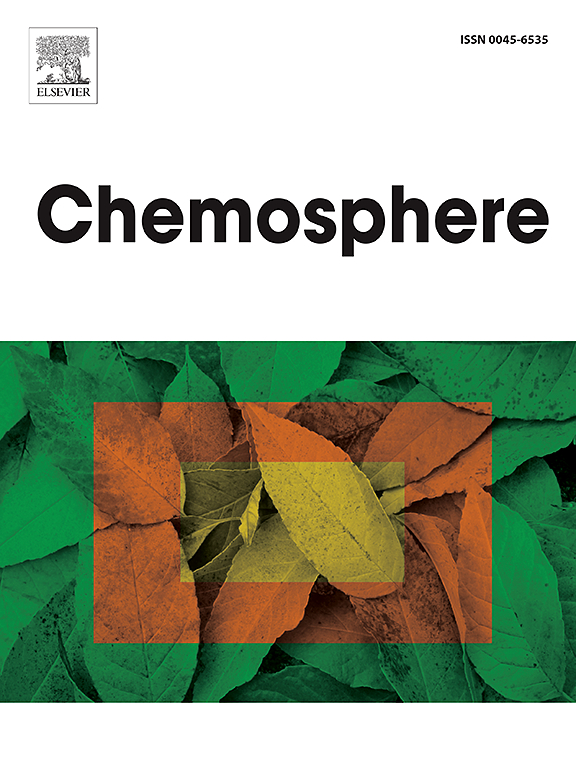Removal of Ni2+ and Cd2+ from aqueous solutions by bionanosorbents: Isotherm, thermodynamic and mechanistic studies
IF 8.1
2区 环境科学与生态学
Q1 ENVIRONMENTAL SCIENCES
引用次数: 0
Abstract
The present work presents the efficiency and the limit in using bionanosorbents (cellulose, chitin and modified chitin nanocrystals) for the sorption of metal ions M2+ (M = Ni and Cd) in batch systems. Bionanosorbents were extracted from plants and shrimp shells, two available and low-cost materials. If cellulose and chitin nanocrystals did not efficiently remove metals in the experimental conditions of this work, the surface-modified chitin exhibited enhancement for the Ni2+ and Cd2+ adsorption capacity than original chitin nanocrystals. The Langmuir and Freundlich models fitted well to the experimental data from which the maximum adsorption capacity was 139.2 mg Ni g−1 and 38.4 mg Cd g−1. Regarding the Gibbs free energy and the Hall parameter, the sorption of Ni2+ and Cd2+ were spontaneous and favourable for pH around the neutrality. This corroborates the examination of IR spectra of oxidized chitin nanocrystals before and after the sorption process from which the metal removal mechanism was mainly attributed to the formation of complexes and ion exchanges of the bionanosorbent and metal ions. Element mappings of the bionanosorbents after sorption revealed a homogeneous distribution of Cd(II).

求助全文
约1分钟内获得全文
求助全文
来源期刊

Chemosphere
环境科学-环境科学
CiteScore
15.80
自引率
8.00%
发文量
4975
审稿时长
3.4 months
期刊介绍:
Chemosphere, being an international multidisciplinary journal, is dedicated to publishing original communications and review articles on chemicals in the environment. The scope covers a wide range of topics, including the identification, quantification, behavior, fate, toxicology, treatment, and remediation of chemicals in the bio-, hydro-, litho-, and atmosphere, ensuring the broad dissemination of research in this field.
 求助内容:
求助内容: 应助结果提醒方式:
应助结果提醒方式:


